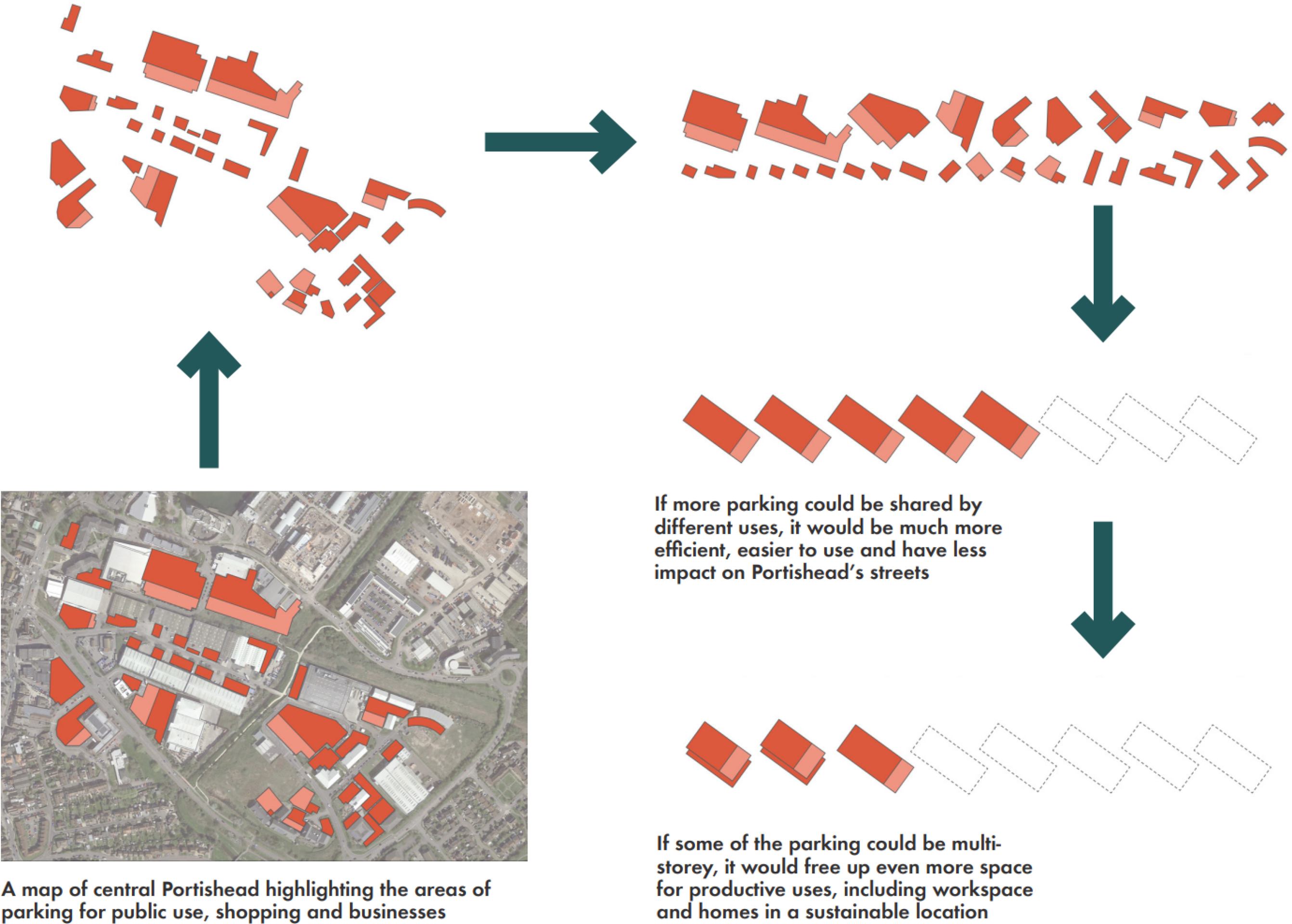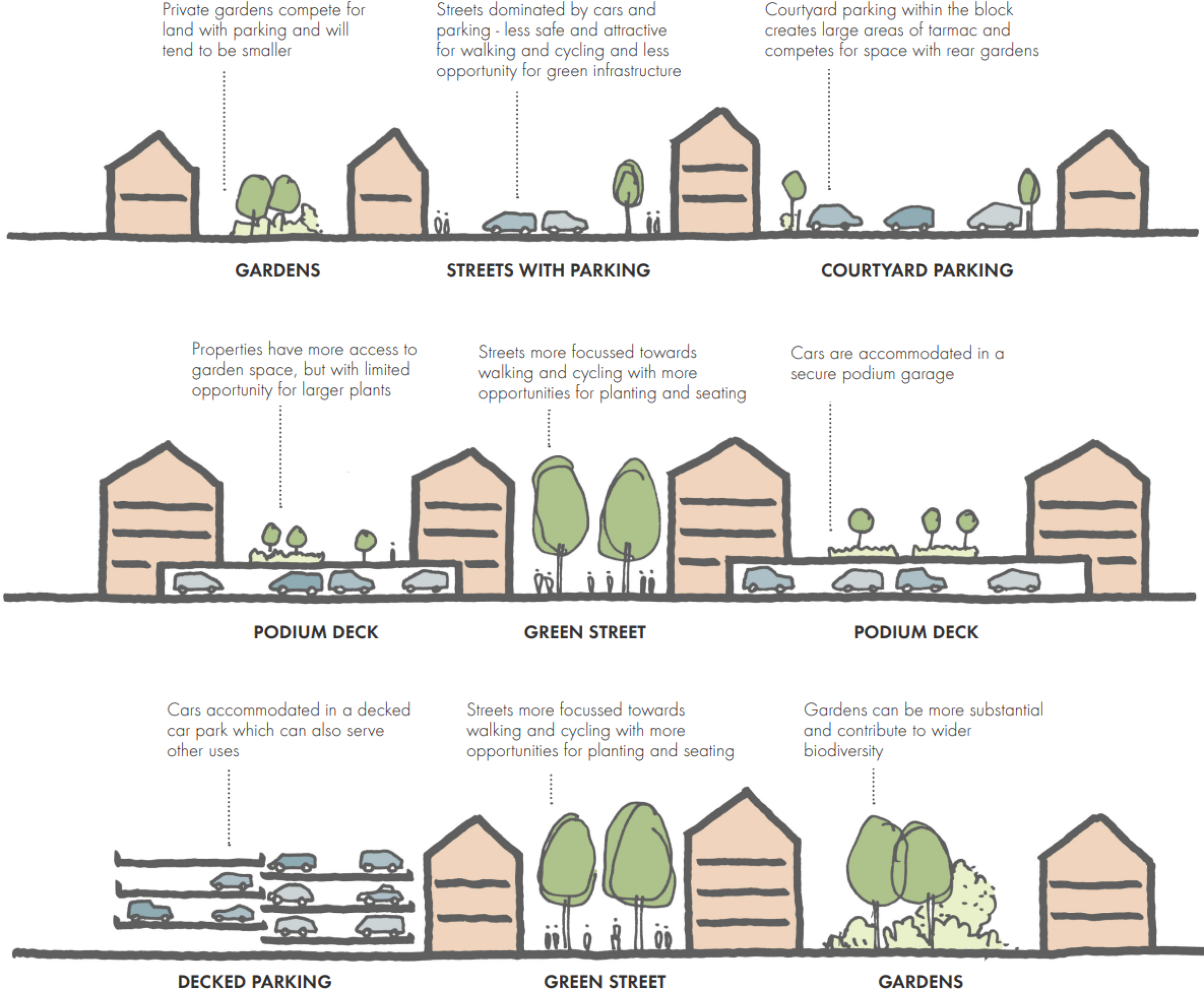Surface car parking currently dominates this part of Portishead. Whilst some car parks like the town centre car park adjacent to the High Street are in demand and well used, most of the car parks are bigger than they need to be. This is largely because they each serve different uses and are split across different ownerships.
As the area changes over time, a different approach to parking could help to meet Portishead’s parking needs but also reduce the impact it has on the streets. Greater use of shared parking and multi-storey parking would mean that less space needs to be given over to cars and more can be used for buildings and spaces.
Provision of different parking to suit different needs will also help. Parking near the High Street which is best for short-stay errand parking should be complemented with longer stay parking suitable for people who work in the area, but might not need to park quite so close.
Residential parking
Any new homes in the area will need some parking, although the central location and delivery of the station will help to reduce the overall requirement. There are different ways to deliver this, each with their strengths and weaknesses.
Surface parking, either on street or in courtyards is space hungry and has a big impact on the public spaces. It limits the amount of development that can be delivered, but has the advantage of being cheap to build.
Parking in a podium or a multi-storey car park is more expensive to build, but can be used to create better streets and more garden space for residents. They allow for streets to be focussed around walking and cycling as well as allowing deliveries and servicing, and can support schemes like car sharing which reduce the need for car ownership.
The masterplan framework is flexible and can accommodate a range of options. However, options which reduce the need for surface parking will work best with the other objectives in the masterplan to create a sustainable place.

